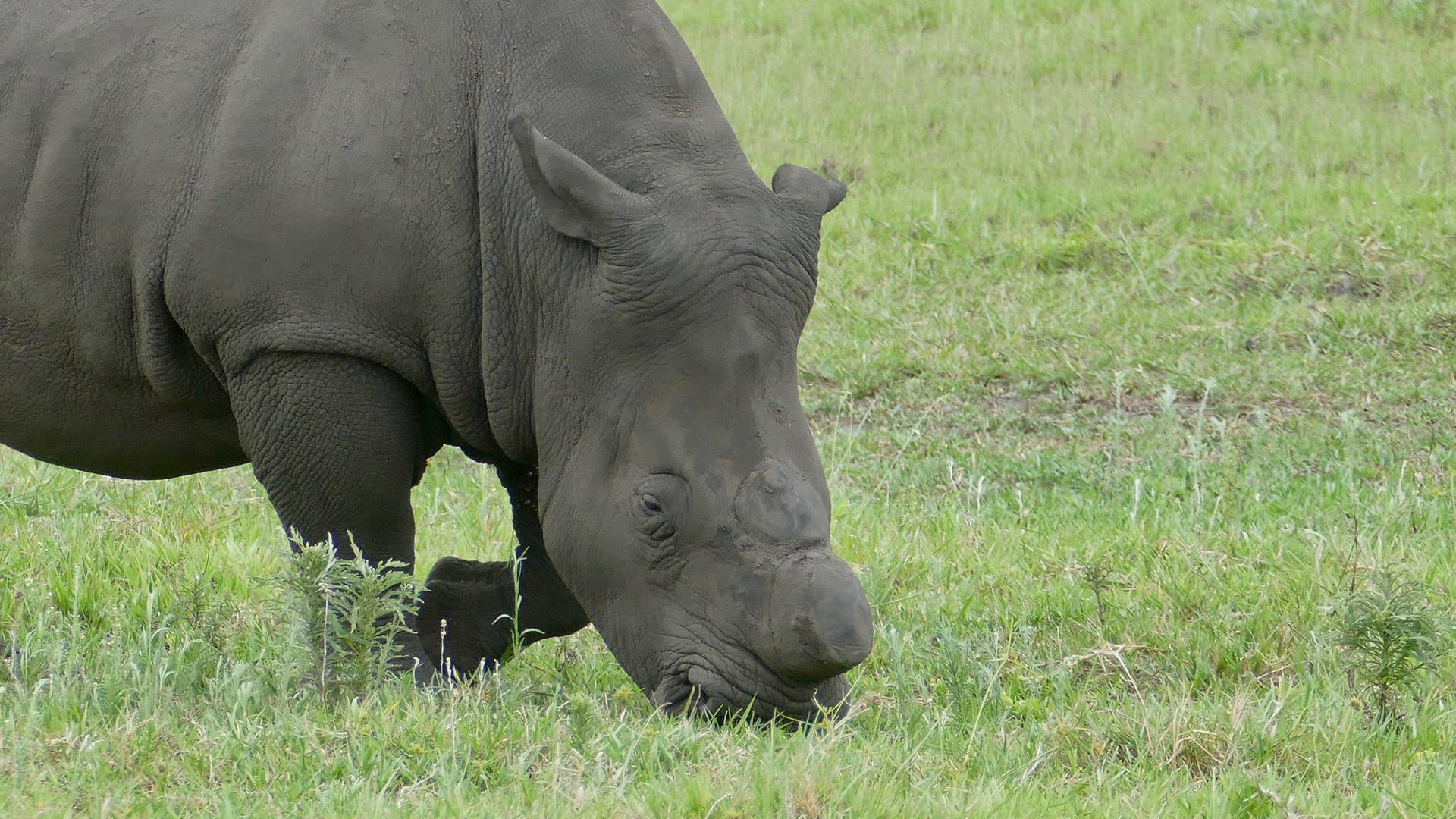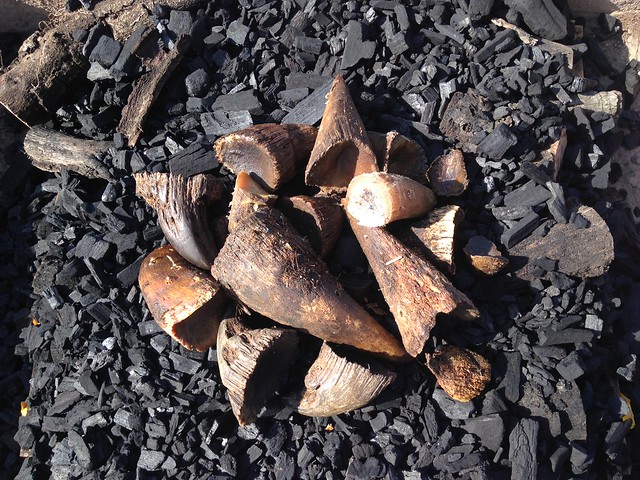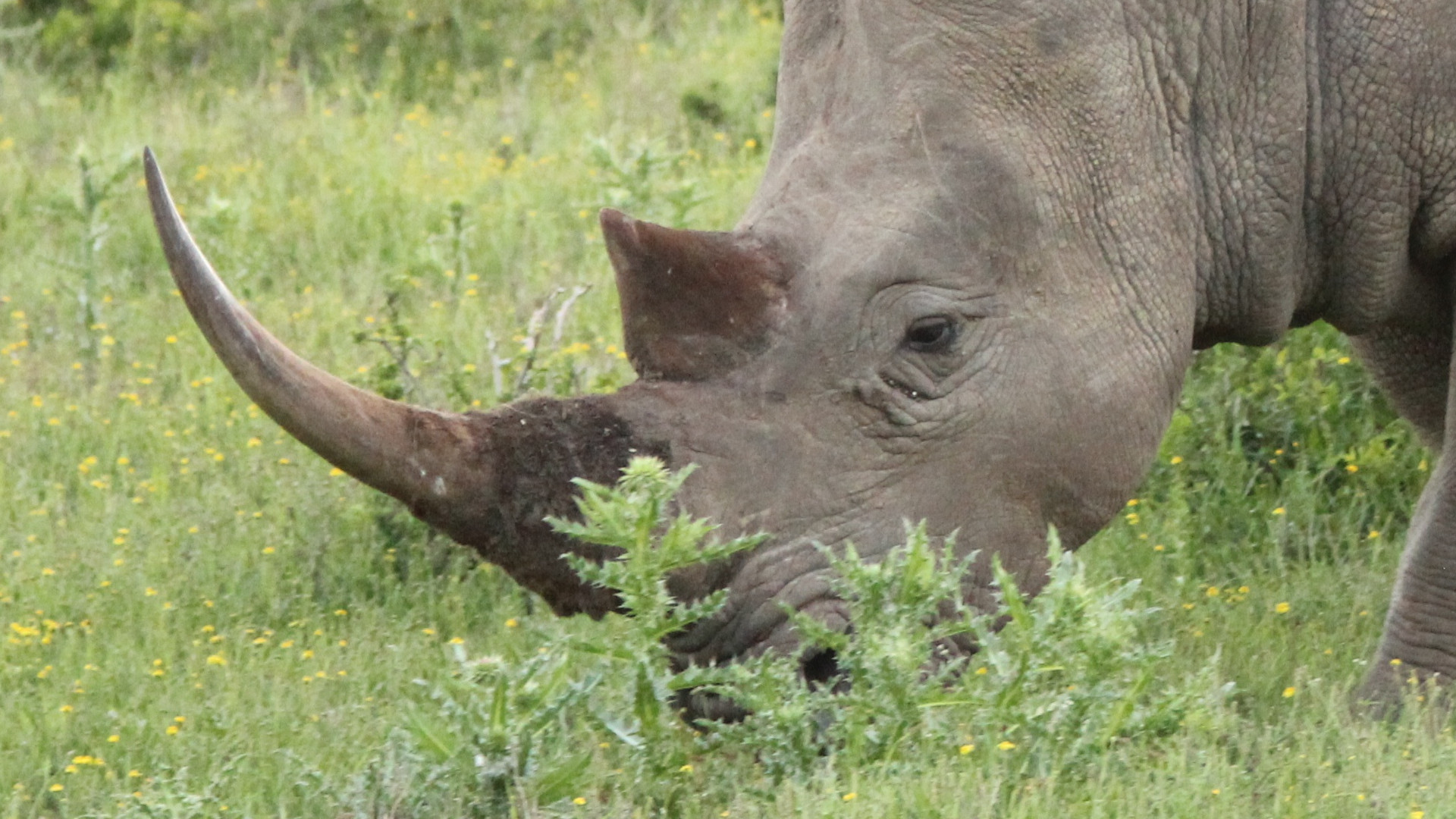The three-lobed footprints in the dirt road ahead of us are unmistakable: the tracks of a large rhinoceros.
Long have I wanted to see a rhino in the wild, and I’m about to get more than I bargained for. Rather than try to spot rhinos from a vehicle on a safari, I had wanted to get some conservation experience in the field, so I joined a project at a reserve in Greater Kruger National Park that accepts volunteers. It turned out that while I was there the reserve took an extreme step to protect the animals in its care.
We’ve spent all morning in a Land Rover tracking not one but two rhinos — a mother and her calf. Our driver, Leonie, a field technician in the reserve, radios our information after some fresh dung on the side of the road confirms her suspicions about the direction the rhinos are heading. They’re among the last rhinos in the reserve that still need to be dehorned.

Dehorning is seen as a preemptive strike in the ongoing rhino-poaching crisis, a relatively recent assault that has devastated rhino populations. In 2006 and 2007, just one or two rhinos were poached per month in South Africa, but the situation exploded soon after. Between 2013 and 2017 more than 1,000 rhinos were poached each year, an average of three per day. That number dipped slightly to just over two a day in 2018, but some say that’s because there were fewer rhinos left to kill.
This carnage is fueled by the high black market price of rhino horn — greater by weight than that of gold — and high demand in Vietnam and China. In both countries it’s lauded for its purported medicinal value and used to treat anything from hangovers and fevers to rheumatism and gout, often as a sort of cure-all. Tests show rhino horn — made of keratin, the same protein that comprises human hair and fingernails — has no medicinal value, but awareness campaigns to reduce demand have so far had little effect.
Thanks to Leonie’s information, a plane now circles overhead. When they spot the mother rhino or her calf, they will call in the helicopter team to dart the animal with a sedative. Darting from the air allows the animal to fall forward onto its sternum, reducing risk of injury, and then a ground team has three minutes to remove the horn before health complications arise.
In the distance, we see the helicopter swoop in. When its tail end tilts up, I realize the animal has been darted and we’re too far away to be useful. The other ground teams will take care of the dehorning.
We drive through the bush to the rendezvous place, and we’re only there a few minutes when, down the hill, I finally see my first-ever rhino in the wild. It’s the calf of the now-dehorned mother, trying to escape the loud helicopter overhead. It charges awkwardly out of the bush and across the road before plunging back into its protective cover.
But the calf can’t hide from the eyes above it. The helicopter team quickly darts it and we give chase, driving madly off road, careening between trees and axle-crunching boulders. Three ground teams pull up and we grab chainsaws and vet kits and run to the downed calf. The veterinarians apply a blindfold: The calf now looks like a big baby with a toothache. A chainsaw roars into life and the nub of horn, no more than three inches long, is sawed off. A grinder carves away the stub and applies resin, so that it looks somewhat natural.
But it’s still a rhino without its horn.
The operation complete, one of the veterinarians injects a reversal serum and we dash back to our rovers. Once the calf awakes it will cry for its mother, and we hope the two will quickly find each other.
Back again at the rendezvous spot, one of the other teams produces the mother’s horn. I gasp at its size, like a crescent moon, but with a wider base. I can’t quite process seeing the horn without its rhino; momentarily I feel like we’re in collusion with the poachers. The whole operation is upsetting, like taking the laugh out of the hyena or the roar from the lion.
The horn is to be handed off to a government official and kept in a bank vault.
That, to me, sends the wrong message.
Rather than stockpiling chopped-off horns, it seems that a public burning of rhino horn would send a strong signal to consumers that South Africa is serious about protecting its rhinos.
Unfortunately, that’s unlikely to happen anytime soon. In fact South Africa has recently shifted the other way. Though international trade in rhino horn has been banned since 1977, private rhino breeders in South Africa won the right in 2017 to sell rhino horn within the country, a move criticized by many conservationists. Why would buyers be interested, the argument goes, except to traffic the horn out of the country?
Not only does the high price of rhino horn lure and entrap poachers into becoming pawns for large crime syndicates, rhinos themselves are becoming pawns of rhino breeders who, under the guise of protection, want to cash in on the value of rhino horn. Since the dehorning effort at the reserve I visited, there has been a lull in poaching activity there. But dehorning can only be a temporary strategy — the horns grow back after about eighteen months — and the future of rhinos is hardly secure.
That future could hinge on what happens in August, when the Convention on International Trade in Endangered Species (CITES) has its triennial Conference of the Parties in Switzerland. The agenda includes a proposal from eSwatini (formerly Swaziland) to allow trade in its country’s rhino horns and a proposal from Namibia to allow trade in live white rhinos for trophy hunting.
Both of these proposals commodify rhinos and rob them of the very thing that makes them rhinos. Instead of loosening trade restrictions, we need to tighten them. Further, we need to pressure Vietnam and China to enforce their existing bans and crack down on the black market. Demand for rhino horn is simply too great.

I think of that rhino calf and its tiny horn, barely the length of my finger. Is its fate to be perpetually sedated and dehorned, or worse yet, to be permanently dehorned by poachers? Abandoning protections put in place decades ago will keep rhinos like this one perpetually in the crosshairs. It’s my hope, and that of many others in the conservation community, that the CITES parties will not approve the proposals put in front of them this month. Rhinos won’t have a fighting chance until they are treated with the dignity they deserve.
The opinions expressed above are those of the author and do not necessarily reflect those of The Revelator, the Center for Biological Diversity or their employees.
![]()


